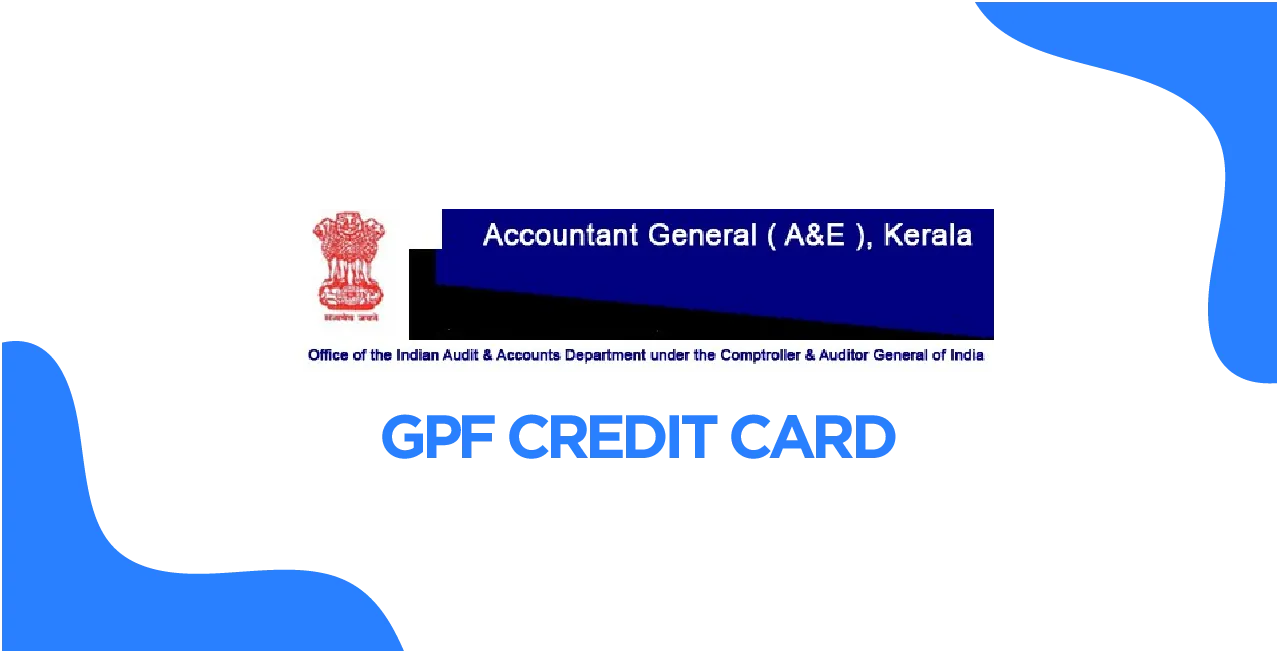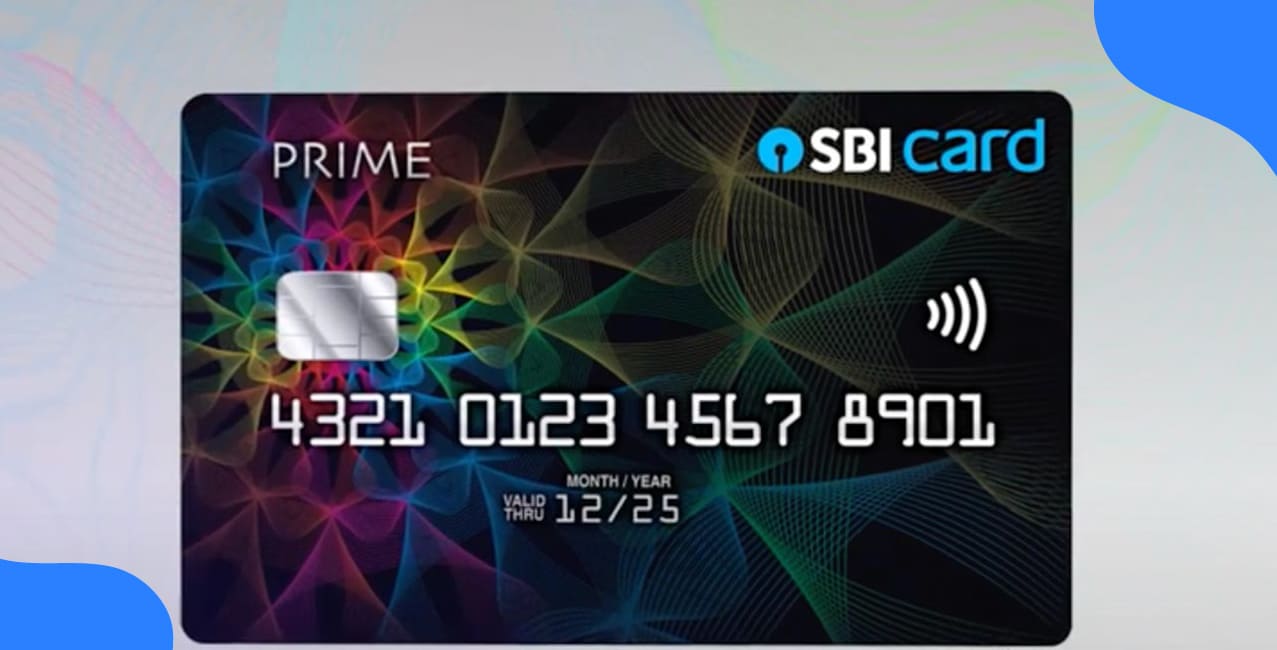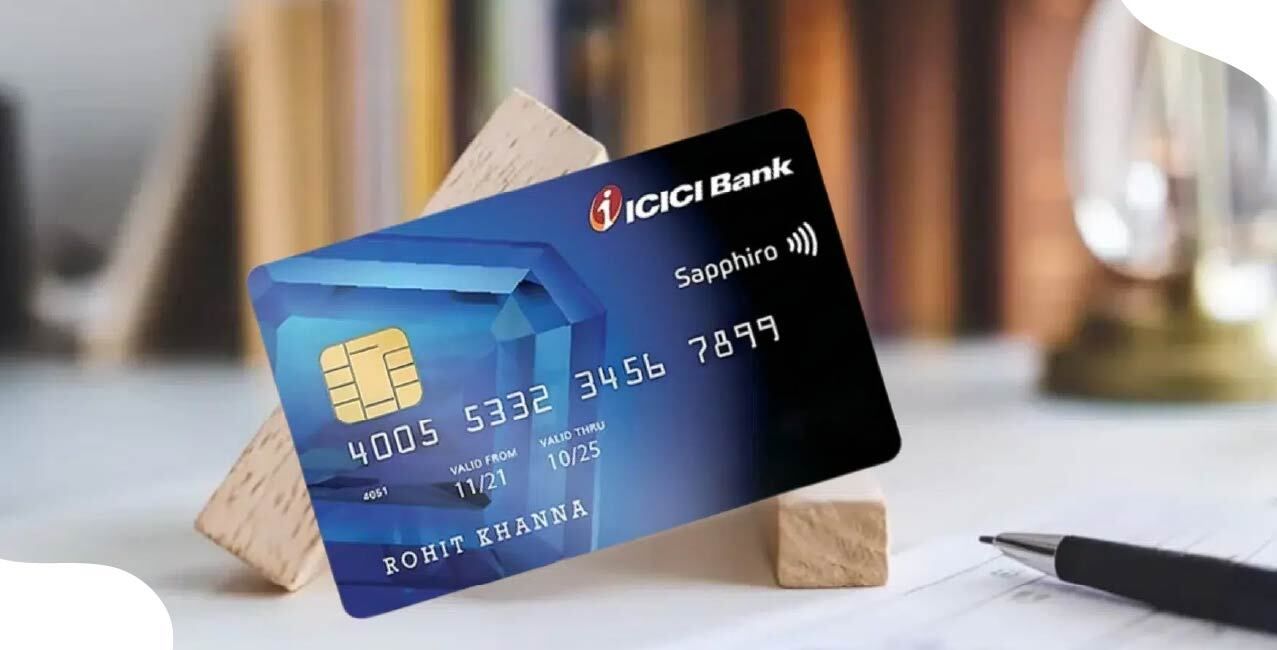
Author
LoansJagat Team
Read Time
12 Minute
19 Feb 2025
GPF Credit Card 2025: Updated Features, Benefits & Application Guide
For more than ten years, Ravi, a teacher in Kerala’s government schools, has consistently contributed ₹25,000 annually to his General Provident Fund (GPF). He received his GPF statement every year, including his contributions, interest accrued, and the remaining balance. With an interest rate of 8% per annum, Ravi’s savings grew significantly over the years.
By the end of ten years, Ravi had contributed a total of ₹2,50,000, and the interest rate accumulated on his contributions amounted to approximately ₹2,00,000. Thus, his total savings in the GPF account were around ₹4,50,000, a combination of his annual contributions and the interest earned.
Ravi was initially worried about the costs when his daughter indicated that she wanted to continue her education overseas. But when he checked his GPF statement, he saw that he had saved up enough money. Ravi requested a legal withdrawal from his GPF account, and he was satisfied with his financial situation. The procedure was simple, and the money was released on time.
Ravi was able to support his daughter’s aspirations without compromising his financial security because of the GPF credit card’s clarity and openness, underscoring the significance of consistent financial planning and monitoring.
GPF Credit Card: An Overview
In India, the term “GPF Credit Card” describes the yearly statement that General Provident Fund (GPF) subscribers get. Often referred to as a “credit card,” this statement shows the subscriber’s GPF account balance for a given fiscal year and information on donations, withdrawals, and interest earned. It acts as a thorough record that keeps track of their savings and makes plans for upcoming expenses.
For example, GPF members can obtain their annual account statements using an online site provided by the Principal Accountant General (A&E), Kerala. To ensure openness and convenient access to their financial data, subscribers can view and download their GPF credit cards using their login credentials.
For government workers, these “credit cards” are essential to their financial planning. To ensure economic stability and readiness for future requirements, subscribers can make educated decisions about loans, withdrawals, and requirements planning by routinely examining their GPF records.
Key Highlights of GPF Credit Card
The General Provident Fund (GPF) is a savings plan created especially for government workers in India. It permits these workers to build a retirement corpus by contributing a percentage of their pay. Here are some of the key highlights of the GPF Annual Statement Credit Card:
- Detailed Account Summary: A thorough summary of the subscriber’s account is given in the statement, including the closing balance, interest earned, withdrawals and advances made, and the total amount contributed over the year.
- Transparency: The GPF statement guarantees openness by describing all transactions, enabling subscribers to confirm the correctness of their accounts and spot any inconsistencies.
- Financial Planning Tool: Subscribers may efficiently plan for future financial demands, such as retirement, children’s education, or medical bills, with information in their savings.
- Accessibility: GPF statements are accessible to subscribers via online portals offered by numerous state accountant general offices. The Principal Accountant General (A&E), Kerala, provides one online platform.
- Regular Updates: These statements are sent to subscribers every year, guaranteeing that they are kept up to date on their investments and any modifications to the fund’s regulations or interest rates.
Government workers can ensure improved financial management and readiness for future demands by routinely checking their GPF yearly statements, giving them a clear picture of their financial situation within the fund.
Features of GPF Credit Card
The General Provident Fund (GPF) annual account statement, known as the "GPF credit card," gives customers comprehensive information on their GPF accounts. In addition to the highlights above, the following features are included:
- Nomination Details: The statement includes information about the nominee(s) chosen by the subscriber, ensuring clarity on the rightful beneficiary in sudden circumstances.
- Loan and Withdrawal Records: It provides a record of any loans or withdrawals taken against the GPF, including the amounts, dates, and purposes, aiding subscribers in tracking their financial activities.
- Missing Credits or Debits: The statement highlights discrepancies, such as missing credits or debits, allowing subscribers to address and improve quickly.
- Service Information: Details like the subscriber’s department and GPF account number are mentioned, ensuring accurate identification and record-keeping.
- Digital Access and SMS Alerts: Subscribers can access their GPF statements online and receive SMS alerts for transactions, improving convenience and real-time monitoring.
All of these components work together to give members an easily accessible, comprehensive, and transparent overview of their GPF accounts, which makes financial planning and administration easier.
GPF Credit Card Fees and Other Charges
A GPF Credit Card is the name given to subscribers' yearly account statement, which lists all of their donations, withdrawals, interest, and the total amount in their GPF account for a given fiscal year. Thanks to this statement, which acts as a thorough record, government workers may keep track of their savings and make plans for future financial requirements.
The GPF annual statement is usually available to subscribers via the specified internet portals or the office of their respective Accountant General. For example, members can access and download their GPF statement using the online portal offered by the Principal Accountant General (A&E), Kerala.
It’s important to remember that, unlike an ordinary credit card, the GPF annual account statement is just meant to be used as information. As a result, it is not connected to any fees, levies, cashback, or reward programs.
For complete information about the GPF, including regulations, subscription costs, and withdrawal processes, subscribers can consult official government publications like General Provident Fund (Central Services) Rules.
GPF Credit Card Pros and Cons
The “GPF credit card” is a thorough record allowing government workers to track their contributions, withdrawals, interest earned, and overall balance.
Pros:
- Legal Protection Against Attachment: The balance in the GPF account is safeguarded from attachment under any decree or court order, ensuring that the funds remain secure for the subscriber’s future needs.
- Nomination Facility: Subscribers can nominate one or more individuals to receive the fund balance in the event of their demise, ensuring that the accumulated savings are distributed according to their wishes.
Cons:
- Limited Accessibility for Private Sector Employees: The GPF is exclusively available to government employees, rendering private sector employees ineligible to participate in this savings scheme.
- Mandatory Contributions: For certain government employees, contributing to the GPF is compulsory, which may limit their flexibility to allocate funds to other investment avenues.
Eligibility Criteria for GPF Credit Card
Category of Staff | Eligibility Criteria |
Permanent Employees of Any Pensionable Service | Eligible to join the fund. |
Probationers in Any Service | Eligible after completing the probation period and being made full-service members. |
Temporary, Acting, and Officiating Members | Eligible after completing one year of service. |
Part-Time Contingent Employees | Eligible after completing one year of service. |
Temporary, Acting, and Officiating Members (Under One Year) | Can apply in writing to join the Fund even if they haven’t completed one year of service. |
How to Apply for a GPF Credit Card?
Step | Details |
Application Submission | The head of the office submits a digitally signed copy of the application, including the Government servant’s particulars, to the Accountant General (A&E). |
Submission Method | The application is sent through the online admission module available in the SPARK system. |
Account Number Allotment | GPF account number is allotted by the Accountant General with a prefix indicating the subscriber's department (for full-time employees). |
Account Number Validity | Once allotted, the GPF account number remains operative until the subscriber leaves service, even if they change department or district. |
Part-Time Contingent Employees | For part-time contingent employees, the account prefix will be "CNT" with no department prefix. |
Centralized Application Process | All applications for admission to GPF and allotment of account numbers must be forwarded to the Office of the Accountant General (A&E), Kerala. |
Application Address | Office of the Accountant General (A&E), Kerala, MG Road, Thiruvananthapuram 695001. |
Staff Pay Bills and GPF Recovery Schedules | Drawing and Disbursing Officers prepare pay bills and GPF recovery schedules and submit them to the Treasury Officers. |
Payment and Posting | After payment, the Treasury Officer digitally forwards the vouchers to the Accountant General. The Accountant General posts remittances and withdrawals. |
Account Details | The subscriber's account reflects subscriptions, refunds, dearness allowance, pay revision arrears, interest allowed, and withdrawals for the year. |
Nominations for General Provident Fund (GPF)
Point | Details |
Requirement for Gazetted Officers | When joining the Fund, every Gazetted Officer must submit a nomination in the prescribed form to the Accountant General (A&E). |
Application Admission without Nomination | If the nomination is not provided, the application for the fund will still be admitted if the applicant is eligible. Efforts will be made to obtain the nomination later. |
Note on Other Subscribers | Even for subscribers under the General Provident Fund (Central Services) Rules, 1960, and All India Services (Provident Fund) Rules, 1955, every effort will be made to obtain the nomination. |
Responsibility for Non-Gazetted Officers | The Head of Office is responsible for scrutinising, accepting, and custody of nominations for Non-Gazetted Officers under the General Provident Fund (Kerala) Rules. |
Actions by the Head of Office | Upon receiving nominations, the Head of Office shall: i. Make an entry regarding the acceptance in the Service Book of NGOs. ii. Make nominations available for verification by the Local Audit Party. iii. Send the original nomination with final withdrawal applications in case of death. |
Custody of Nominations for Gazetted Officers | Nominations for Gazetted Officers must be accepted and kept under safe custody by the Accounts Officer. |
Nominations for Non-Gazetted Officers Promoted to Gazetted Cadre | For Non-Gazetted Officers promoted to Gazetted cadre, the Head of Office will forward existing nominations to the Accounts Officer for safe custody. |
What is the Rate of Subscription?
The subscriber determines the subscription fee. However, for full-time employees, the subscription rate cannot be less than 6% of their basic pay or more than their basic pay. For part-time contingent employees, the subscription rate cannot be less than 3% of their emoluments or more than their
emoluments.
The basic pay as of March 31st of the previous fiscal year is used to calculate the minimum subscription. The subscription rate may be reduced once and increased twice during a budgetary year.
Example: If a full-time employee has a basic pay of ₹40,000 on March 31st, the subscription rate must be between ₹2,400 (6% of ₹40,000) and ₹40,000. However, if the employee chooses a rate of ₹10,000, this would be acceptable as it lies within the allowed range.
For a part-time employee, if the emoluments are ₹20,000, the subscription rate must be between ₹600 (3% of ₹20,000) and ₹20,000.
What are the Conditions for Subscription?
The subscriber will make a monthly contribution to the fund, except:
- Suspension Period.
- Last three months of employment before retirement.
- Leave for which there is no leave pay.
- Following the submission of the closure application.
A subscriber who has been reinstated during a suspension period may pay any amount in whole or in installments as long as it doesn’t exceed the maximum number of arrear subscriptions that can be paid during that time.
A subscriber may decide to forgo a subscription while on half-pay or while on leave without benefits. During the final year of service, just before his retirement date, a subscriber may discontinue his subscription to the fund at any moment.
How Much is the Interest in the Fund?
On the last day of each fiscal year, interest is credited to the subscribers’ account at the rate that the Indian government has periodically prescribed and that the Kerala government has adopted.
For the July-September 2024 quarter, the revised interest rate is 7.1%.
General Provident Fund Help Desk
The General Provident Fund Help Desk has been established in the Office of the Accountant General (A&E), Thiruvananthapuram, to address subscribers' complaints. The officials at the Help Desk prioritise addressing the subscribers' issues.
Subscribers are welcome to contact the Help Desk on all working days from 10:00 AM to 1:00 PM and 2:00 PM to 5:00 PM. Subscribers can access the Help Desk by contacting the reception. Here are the numbers that can be contacted to get your queries resolved:
- 0471-2776650, 0471-2330311
Any questions about GPF should be directed to the Senior Accounts Officer at the GPF Help Desk.
- Accountant General's Office (A&E),
- Thiruvananthapuram, Kerala, 695 001
Conclusion
GPF statements can be seen and downloaded using the online platform provided by the Principal Accountant General (A&E), Kerala. Although the phrase “GPF credit card” is used, it should be noted that this statement does not, like typical credit cards, operate as a financial instrument or provide benefits like cashback or rewards programs.
Rather, it is a useful document for preserving records, guaranteeing openness and helping government workers organise their finances effectively.
Frequently Asked Question Related to GPF Credit Card
Q. How to submit a GPF admission application?
Applications for admission to KPTCEPF and GPF must be made online using the SPARK application module, which is part of the state HR application. Received manual applications will be promptly returned.
Q. Is it necessary to forward GPF nominations of all employees to the Accountant General Office?
Every time a new nomination is made, all Gazetted personnel are required to send it to the FM division of this office. The nominations of non-gazetted workers are held in the custody of the relevant department.
Q. What are the GPF Credit Card Fees and Other Charges?
A GPF Credit Card is the name given to the yearly account statement that subscribers get, which lists all of their donations, withdrawals, interest, and the total amount in their GPF account for a given fiscal year. Thanks to this statement, which acts as a thorough record, government workers may keep track of their savings and make plans for future financial requirements.
The GPF annual statement is normally available to subscribers via the specified internet portals or the office of their respective Accountant General. For example, members can access and download their GPF statement using the online portal offered by the Principal Accountant General (A&E), Kerala.
It’s important to remember that, unlike an ordinary credit card, the GPF annual account statement is just meant to be used as information. As a result, it is not connected to any fees, levies, cashback, or reward programs.
Other Credit Cards | ||
About the Author

LoansJagat Team
‘Simplify Finance for Everyone.’ This is the common goal of our team, as we try to explain any topic with relatable examples. From personal to business finance, managing EMIs to becoming debt-free, we do extensive research on each and every parameter, so you don’t have to. Scroll up and have a look at what 15+ years of experience in the BFSI sector looks like.

Quick Apply Loan
Subscribe Now
Related Blog Post

LoansJagat Team • 22 Sep 2025

LoansJagat Team • 29 Aug 2025

LoansJagat Team • 29 Aug 2025